The Silver Price Today Is Rising:
Should you be buying silver in 2022?
-
AUTHOR
Harrison Burge -
PUBLISHED
February 8, 2022
Looking for the silver price today? Check out the current price of silver live with the handy silver spot price indicator (on the right).
As an asset class, silver tends to perform well during times of economic uncertainty. Check out the below chart to see how the silver price has performed over the last few decades, or learn more about the factors driving silver’s price performance in the article below…
Looking to buy silver as an insurance policy against the uncertainty the world faces today? If the silver price fits your budget, then it makes sense to buy silver as a hedge against price inflation in paper currencies. This precious metal has held the same relative value, and been used as money, for thousands of years.
In this guide, we’ll explain why silver has a solid upside potential to not only store value, but deliver an investment return as well. We will also explore the cheapest ways and places to buy silver in 2021, plus the pros and cons of storing your silver in a secure facility overseas.
There are several indicators that the silver spot price could increase throughout 2021. (The silver spot price is simply the silver price today.) For example, increased government spending and money printing by the Federal Reserve could lead to price inflation. And under similar conditions in the 1970s and after the 2008 financial crisis, silver increased in value.
Click here now to explore other reasons why the current price of silver is likely to increase.
Silver investing may be wise to consider in 2021, especially as an insurance policy against a devaluation of the dollar due to money printing at the US Federal Reserve, and the massive debts accumulated by governments around the world.
Click here to explore how to invest in silver, based on your personal goals.
If you are looking to buy silver as a hedge, or insurance policy, against irresponsible government spending and central bank money printing, the best way is to simply buy physical silver bullion and/or silver coins and to store it in a home safe or secure overseas facility.
If you are interested in generating a return on your investment in silver, click here to learn about how you could make a profit trading in options and futures contracts on silver.
“Junk silver” is the term used to refer to US dimes, quarters, and half-dollars minted by the US Mint prior to 1965, all of which contain 90% silver. These coins are worth more than their face value due to their silver content.
Click here to learn the best places to buy junk silver online today.
What You Will Learn in This Silver Guide
Why do people trust silver? Because of its long history as a proven store of value.
Silver was used as money — alongside barley — in the first known civilization, ancient Sumer, over 5,000 years ago.
By the time the Roman Empire was minting silver coins as currency, most silver was being mined in Greece and Spain.
Centuries later, the Spanish discovered more silver in the New World: Starting in the early 1500s, the South and Central Americas, including Peru and Mexico, produced over 80% of the world’s silver for a span of 300 years.
In the 1800s, Comstock Lode in Nevada was discovered, turning the US into a major producer. Global silver production doubled to 80 million ounces per year.
By 1920, production worldwide topped 190 million troy ounces per year, with new discoveries being made in Europe as well as Africa and Japan.
New mining technology has helped boost production as well, and these technological advances continue today. Steam-assisted drilling, dewatering, and transportation efficiencies all contribute to the growing volume of silver – as did new ways of separating silver from ores surrounding it.
Unlike gold, silver has numerous, modern industrial uses. Its malleability and conductivity make it a component of countless high-tech devices.
But for many, silver is known mainly for its significance as a store of value. There are very few items of any kind that can hold their value through thousands of years.
Gold is one, and silver is another.
Let’s get into the best places to buy cheap silver – junk silver, bullion bars, and more – below…
In this section you'll learn more about:
Prior to 1965, dimes, quarters, and half-dollars minted by the US Mint were 90% silver.
But vast money printing in the 1960s — to service both domestic spending at home and abroad in the Vietnam War — meant that the world was flooded with US dollars. Foreign governments and institutions took note of America’s deficit spending. They exchanged this surplus of dollars for more and more silver (and gold).
So, in the mid-1960s, a shortage of silver started to emerge.
President Lyndon B. Johnson adamantly warned about a looming silver shortage. Taking the cue from the President, the US Congress passed the Coinage Act of 1965. Johnson signed the act into law in July of the same year.
The Coinage Act immediately changed the metal composition of dimes, quarters and half-dollars. The 90% silver content in these coins was stripped away and replaced with a copper core surrounded by a copper-nickel alloy. Kennedy Half Dollars minted between 1965 and 1970 (and also in 1976) retained a 40% silver content.
But there was an important, unintended consequence of the Coinage Act…
It drove the 90% pure, pre-1965 coins underground. People spent the new, worthless coins, and they hoarded the old, valuable silver coins.
Years later, some of those old “junk” silver coins resurfaced in coin shops — some in bad condition, others in nearly new, uncirculated condition. (This proves that “junk” is not synonymous with the condition of these coins.) And that’s where you have an opportunity to get your hands on cheap silver.
Junk silver is still legal currency in the US.
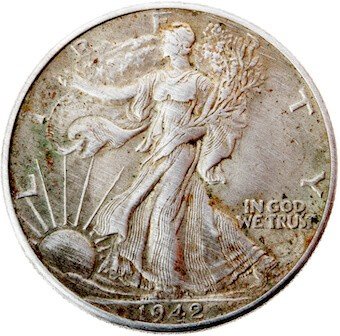
But again, given their 90% silver content, these coins have a greater value than their face value. And people recognize this value. If you believe that the US dollar could hyperinflate some day, it’s not unreasonable to believe that individuals could once more turn to coins with intrinsic value — i.e. junk silver — as a stable store of value
You can find junk silver at your local coin shop. Or you can turn to reputable online dealers. They will often sell bags of junk silver dimes, quarters and half-dollars.
IMPORTANT: Be aware of the fact that there are scammers and fraudsters in the precious metals space.
So, exercise caution and stick with highly rated coin shops and precious metals dealers when buying your junk silver.
And a third reputable outlet type — although one that’s not as widely used — is your local bank. But this usually requires a little bit of luck…
Admittedly, this strategy can be a bit hit-and-miss, and it tends to be quite time consuming.
But if you are committed to finding silver at no additional cost, this might be the route for you.
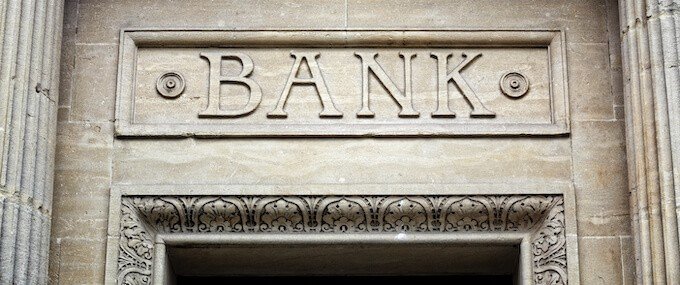
It’s possible to buy rolls of half-dollars at the bank. Mixed in with the regular half-dollars could be pre-1965 half-dollars, which are 90% silver. Or you could also find Kennedy Half Dollars, which were minted between 1965 and 1970 (and also in 1976). These coins are 40% silver.
Step #1: Call local banks and ask if you can buy rolls of half-dollars. Confirm that’s true even if you’re not a customer.
Tip: Target large corporate banks. These banks have a higher volume of circulated coins. You’re looking for circulated coins, not new, freshly minted coins that will not have any silver content.
Step #2: Visit one or more banks and buy the rolls of half-dollars.
Tip: While at the bank, ask the teller for: coins that are hand-rolled (machine-rolled coins will likely only be newer coins with no silver content), rolls that were not returned by a single customer (since those were probably already searched through for silver) and rolls that have been at the bank the longest, to increase your chances of finding some silver.
Step #3: Go home and start searching.
You might come up with a silver coin or two. Or you might come up empty-handed.
Again, aside from committing some time, there’s no downside. If you don’t find any silver in these rolls, you can always return to the bank and exchange the half-dollars for paper dollars.
For your convenience, we’ve assembled a list of reputable online coin and silver bullion dealers that offer the cheapest prices on silver.*
*Please note that the below table is current as of the time of publishing. These dealers’ premiums may vary in the future, depending on the price of silver, the dealer’s inventory, demand, etc.
But you can at least use this list as a starting point for shopping online for silver. Sovereign Man and its employees don’t receive any kind of compensation from the companies mentioned below.
| Prices for Silver American Eagles & Canadian Maple Leafs1 | |||||
| Dealer | Silver American Eagles | Silver Canadian Maple Leafs | Shipping costs and information | ||
| Price (%) Above Spot | Can you purchase individual coins (less than the standard 20)? | Price (%) Above Spot | Can you purchase individual coins (less than the standard 25)? | ||
| Kitco | $5.54 (22%) | Yes | $5.32 (21%) | Yes | Ground: $15 Standard: $35 Express: $50 Free shipping to the continental US and Canada for purchases valued at $5,000. |
| JM Bullion | $6.51 (26%) | Yes | $5.21 (21%) | Yes | Shipping costs vary. Deliveries only to US addresses, and most orders are shipped via USPS or UPS. Free shipping for orders over $199. |
| Gainesville Coins | $4.84 (19%) | Yes | $4.30 (17%) | Yes | Shipping costs vary, depending on your preference (USPS or UPS 3-day, 2-day air or next-day air). International shipping is available. |
In 2020, premiums on physical silver went through the roof.
(The “spot” price — or just “spot” — is the current price in the marketplace for gold, silver, etc. But to buy precious metals, you pay a premium above the spot price. Depending on the supply and demand for physical silver, for example, the premium could range from 5% to 100% over spot.)
People were rushing to coin shops and online silver dealers, paying 50%, 75%, even 100% premiums over the spot price. Many silver dealers were soon completely cleared out of inventory.
Since then, depending on the coin and whether you can find a deal, the premiums have dropped significantly.
Still, handing over several additional dollars above spot for each silver coin hurts.
Fortunately, there’s a way to cut your premium to basically zero. Granted, this avenue takes more work than heading down the street to your local coin shop or filling out an online order form to buy from a dealer.
We distributed a report to Sovereign Confidential readers, walking them through each of the steps to secure physical silver bars for next to nothing over spot.
If you’re already a member of Sovereign Confidential, click here to read this premium report.
To safeguard your physical silver (or other precious metals) holdings, you may want to consider using an overseas storage facility.
Of course, before sending an ounce overseas, you’ll need to perform thorough due diligence.
To assist you in your research, here’s what to look for in a precious metals storage facility:
There are plenty of overseas gold and silver storage providers who are nothing more than glorified middlemen. They charge their customers a hefty fee, yet do nothing more than hand off the gold to some other company to provide secure storage services.
There’s no sense in lining someone’s pockets to do nothing for you.
You’ll want to make sure you have your own safety deposit box that is yours and yours alone. A lot of providers have the bad habit of mixing all of their customers’ precious metals together. They call this ‘allocated storage’, but it’s highly disorganized.
‘Segregated’ storage means each customer has his/her own specific area or lock box for that specific customer’s silver. There should be no mixing of assets in storage.
Anyone who is storing valuables for you, whether a bank or secure storage facility, should be completely transparent about their financial condition. You need to have comfort that they’re profitable, solvent, and can remain in business for years to come.
So ask any storage provider for financial statements. If they’re not willing to provide them, stay away.
Every country treats precious metals differently, and some have very stringent rules for buying or importing silver or gold. Furthermore, customs duties and taxes upon purchase tend to vary from one country to the next.
In the UK, for example, there is no tax on ‘investment grade’ gold. But according to British rules, that means that a gold coin must have a purity of at least 90%, have been minted after the year 1800, AND is considered legal tender in its country of origin.
This rules out any ‘commemorative’ coins, which would be subject to VAT.
Silver Bullion in Singapore. The facility is segregated, state of the art, and incredibly transparent.
And in Singapore, Investment Precious Metals (IPM) can be purchased tax-free as long as the gold content is at least 99.5% or the silver content is at least 99.9%.
(Full disclosure: The talented founder of Silver Bullion is a friend of our founder, Simon Black. Neither Simon nor any director or employee of Sovereign Man receives a dime from Silver Bullion or any of the other service providers mentioned in this article.)
Now that we’ve explored buying silver, let’s take a look at how to invest in silver.
Want in-depth guidance on silver (and gold)?
If you want to learn more about silver, as well as gold, download our free Ultimate Gold and Silver guide. We:
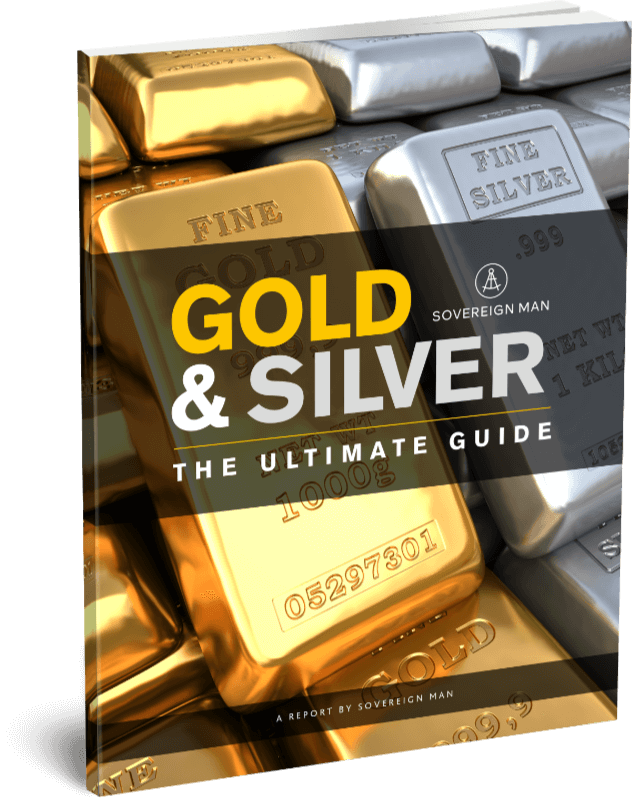
You can invest in silver. Or you can hold silver. Or both.
Let’s discuss the difference between investing in silver and holding silver…
Physical silver — held in your home safe or a storage facility — is NOT an investment.
An investment is an asset that pays you to hold it. Physical silver doesn’t pay a dividend or return a portion of your invested capital.
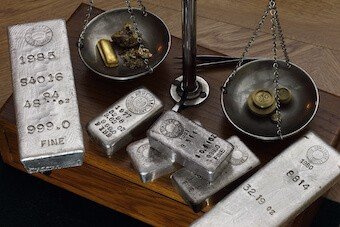
But unlike paper currency or dollars held in your checking or savings account, physical silver cannot be devalued or inflated away by governments and central banks.
Also, alongside physical gold, physical silver is a unique asset class.
There’s no counterparty risk. That means you’re not dependent on any individual or institution for the asset’s value. One silver coin is and always will be one silver coin.
And this way, silver can preserve a portion of your purchasing power — today, tomorrow and 20 years from now.
So, we can hold physical silver to deliberately reallocate a portion of our wealth out of paper currency.
But simultaneously, we can also invest in silver…
This is NOT investment advice
As always, before putting a dollar, euro, yen, etc. to work, you should be aware of the risks… including a potential complete loss of your capital.
We’re not financial advisors, and this article should not be mistaken for financial advice.
You should consider how comfortable you are with varying degrees of risk, and your preferred timeline for an expected return on your capital. And then consult with a trusted financial professional to meet your objectives…
Aside from holding physical silver, you may also be interested in a physical bullion trust.
Another high-risk opportunity is investing in mining companies…
Not many people know this: Very few pure silver mining companies exist.
This is because most silver mined around the world is a by-product of gold, copper, lead and zinc. In other words, discovering and producing silver is typically a nice bonus for the mining companies extracting other metals. But extracting silver is not these companies’ core objective.
In the mining space, there are two primary types of companies.
First, there are producers.
Producers are companies that have active permits to operate mines in-hand.
These companies pull resource-rich dirt out of the ground and filter the gold, zinc, lead, copper and silver from the rest of the worthless materials.
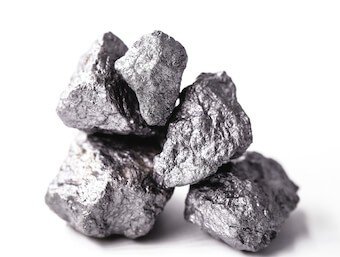
Challenges abound in mining — raising capital, dealing with governments, environmental concerns, engineering obstacles, etc. So, it’s difficult — but not impossible — to make money by investing in producing miners.
Second, there are explorers or so-called “junior” miners.
As the name suggests, these are mining companies that explore for deposits, and then prove that the deposits are significant and commercially viable.
It’s even more difficult to make money with explorers. Because along the way, these companies are burning through large amounts of capital.
So, let’s be clear: Technically, you’re not investing in exploration miners; you’re speculating. You don’t receive a dividend from these companies. Instead, you’re hoping to sell your shares in the future at a much higher price than today.
That’s certainly possible. A small portion of these mining companies will strike a deposit, and then strike it rich by either merging with a producer, or by being bought out. (And in these cases, speculators can see mind-boggling returns.)
Yet in the main, investing in junior miners can be a highly risky proposition. Many sophisticated investors seek to reduce these risks by investing in numerous explorers, but the risks of total capital loss can still remain very high.
Plus, with exploration mining companies, there are risks outside the company, including the risk of a general market selloff.
When a market selloff starts (or even before a selloff), savvy speculators can sell their positions in explorers. And that strategy makes sense. Blue-chip companies that pay a consistent dividend can withstand some market volatility and might be a long-term holding.
But explorers are far from blue-chip companies.
Speculations like exploration companies should be the first on the chopping block for individuals and big money managers alike (for the ones who speculate on miners to begin with, that is). When individuals and institutions who hold large numbers of shares quickly sell, the little guys could be left with huge losses.
So, if you’re thinking about investing in a miner, you should first understand the risks.
The mining space is extremely capital-intensive. A few businesses will achieve success; many will not. If you do all your homework and know what you’re doing, yes, it’s possible to book tremendous profits — 5X, 10X, 20X or even more.
But there’s always a chance that you could lose 50%, 75% or even more of your capital. And with exploration companies, don’t discount the possibility of a TOTAL loss.
For this reason, explorers or juniors are only for sophisticated investors — or more appropriately, speculators — who can withstand the risks.
But you can potentially mitigate some risks.
That’s why your second step — research — is so important. Thoroughly read and research the opportunities you’re considering.
Read the company’s prospectus. Read the company’s Semi-Annual and Annual Reports, including the Management Discussion & Analysis (MD&A) section and all the footnotes. Research the company’s management.
Once again, there are many exploration mining executives selling a dream. And then there are a few serially successful mining executives out there. There’s a good chance that if they’ve been successful in the past, they can also be successful in the future.
And to further mitigate your risks, consider buying shares in a few exploration companies that check off all the criteria above. This way, you’ll diversify a bit. Even the most promising explorer with great management could run into unforeseen delays or financial trouble.
You don’t want to have 100% of your speculation capital in just one company…
A way to invest in miners but significantly reduce the risks
What if you could gain exposure to the tremendous upside of mining companies but simultaneously reduce your downside risks?
It’s possible…
By investing in a resource royalty or streaming company.
A natural resource royalty or streaming company provides upfront working capital to a mining company. In exchange, the royalty company receives a portion of the mining company’s REVENUE (not earnings).
Alternatively, if the deal is structured as a stream, the miner would sell the commodity to the owner of the streaming contract, based on the predetermined conditions of the contract.
So, if the mine extracts and sells 5,000 ounces of silver, the royalty streaming company receives 5% of that sale. A 5% stream on the same mine means that the streaming company takes physical delivery of 5,000 ounces of silver for a set price, determined by the contract.
Royalty and streaming companies have incredibly lucrative and capital efficient business models. They don’t have to worry about pulling metal out of the ground, health and safety concerns for mine employees, ongoing engineering problems, etc.
That said, there are still risks with royalty and streaming companies. So, you should still perform your due diligence.
Finally, for a way to capitalize on higher silver prices, options on futures could be considered (for more sophisticated investors only).
Here’s your profit opportunity with futures contracts…
Let’s say that you also think 2021 will be a great year for silver, based on the reasons we mentioned earlier.
You estimate that the price of silver will hit $40.00 per ounce by or during December 2021. You can buy that December 2021 futures contract. You’ll lock in the current market price of $24.315 for the contract’s terms of 5,000 ounces of silver. Your total outlay in December 2021 at contract expiration will be $121,575.
Let’s say that you’re right: Silver has a great year.
If silver does skyrocket to $40 by December 2021, your futures contract will have a value of $200,000 (5,000 ounces * $40 per ounce of silver). That gives you a 65% profit.
This would be a decent potential profit. But for many people, parting with well over $100,000 is just not possible.
So, that’s where an option on a futures contract can be advantageous…
An option on a futures contract can substantially lower your premium.
And if the option on the futures contract goes your way, you can see a spectacular return. (But importantly, if the price of silver were to drop, you could lose all your money.)
If the price of silver were to spike in 2021, forget about a 65% return.
With silver futures contracts ,you could potentially see a return of 1,000% or more. And you’ll only commit one-tenth the capital to realize this profit.
It’s a much less expensive way to profit from silver’s rise — but there are other ways to buy silver cheaply as well…
Earlier, we said that generally speaking, silver prices track those of gold.
That means that if gold is going up in price, then usually silver is, too.
But gold is MUCH more expensive than silver. Sometimes, dramatically more expensive. (Gold is far more rare.)
A ratio of gold vs. silver explains just that.
Think of the gold silver ratio as how many ounces of silver it takes to buy one ounce of gold.
Over the past 20 years, the ratio has averaged at about 60: You’d need 60 ounces of silver to purchase one ounce of gold.
Under that ratio, if the price of gold is $1,200 per ounce, then silver is about 1/60th of that… $20 per ounce.
But when the pandemic first hit the world — and the world media — back in March 2020, the ratio busted all previous records, hitting 120. That made gold hugely “expensive” and silver “cheap.”
There are ways to play the ratio to benefit your bottom line. Here’s an example:
When Sovereign Man was a brand new business in 2009, silver was worth $13 per ounce.
One key indicator — the gold-silver ratio — told us an investment in silver could pay off fairly quickly.
Silver was trading at a ratio of over 70:1 to gold, meaning 70+ ounces of silver was worth 1 ounce of gold. If silver was $13, then gold was worth about $910 per ounce ($13 * 70).
Another way to think of it: If you had 100 ounces of silver, you could only buy 1 ounce of gold. You wouldn’t have enough for two.
At that time, a ratio of 70 was considered quite ‘expensive’: throughout the 20th century, the ratio historically hovered around 50. One ounce of gold was generally worth 50 times an ounce of silver.
If you had 100 ounces of silver, then under that ratio you could buy two ounces of gold.
And back in ancient times, the ratio was closer to 15. You’d be able to buy six ounces of gold with your 100 oz of silver.
The 70:1 ratio back in 2009 didn’t make much sense to us. The panic of the Global Financial Crisis had prompted a lot of investors to buy gold, but silver was largely being ignored.
So we suggested to our readers that silver was a sensible long-term bet.
In an article on July 7, 2009 Simon Black, Sovereign Man’s founder, suggested readers consider a long-term futures contract that would lock in the price of silver for two years at just $13.
And sure enough, within two years, the gold/silver ratio had reversed to just 35:1, and the price of silver hit a record high of roughly $50 an ounce.
Now, no financial investment should move up or down in a straight line, and we were concerned that the silver price had risen too quickly.
So, within hours of the silver peak, we sent a note to our readers suggesting that silver could be at a top, and essentially locking in a gain of nearly 300%.
Silver then spent the next few years in the doldrums… until 2020.
In March 2020, the gold/silver ratio hit a record 120:1 and the price of silver fell below $12 per ounce.
Once again, we alerted readers to the mismatch in the gold and silver prices. And once again, the ratio corrected itself.
As of mid-January 2021, the price of silver had risen to $25.14 per ounce– a 118% increase since March.
And the silver-to-gold ratio is now about 74:1.
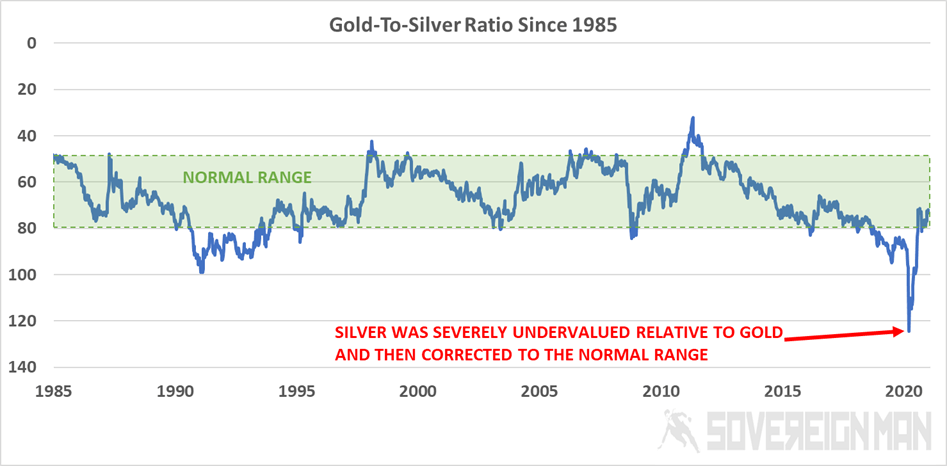
This is back within the typical range, but if the 2009-2011 scenario plays out, we could still see a major increase in the value of silver.
That is especially true if the price of gold continues to rise, as is likely for reasons we have already explained in regards to inflation brought on by massive money printing and government spending.
With the possible devaluing of the dollar, and the risks of inflation, you may not want to convert your precious metals back into cash. But you can still…
If you follow the ratio, you can convert some of your silver into gold when silver appears overvalued — for example the 35:1 ratio in 2011.
And when silver appears undervalued against gold, you can convert some of your gold into silver — for example the 120:1 ratio in March 2020.
This way, you can take advantage of overvalued gold and silver to purchase whichever precious metal is undervalued at the time, and continuously grow your stash.
This helps you acquire the most gold and silver at the best value, and allows you to take advantage of price increases without converting your precious metals back to cash.
When there’s a financial crisis, silver often plummets, along with base metals (lead, copper, etc.) and other commodities. Usually, gold takes a hit, too, but not as much silver. Once the panic is over, gold starts to shine as investors seek a proven store of value.
But if central banks start printing large sums of money — as was the case throughout 2020 — the price of silver eventually starts to stabilize. Then the price of silver often starts to track the price of gold. And then, in percentage gains, it often surpasses gold.
That’s exactly what happened during the 2008 financial crisis.
In October 2008, silver dropped to less than $10 per ounce. Then the Fed cranked up the printing presses. Its balance sheet increased from $850 billion to nearly $2.5 TRILLION.
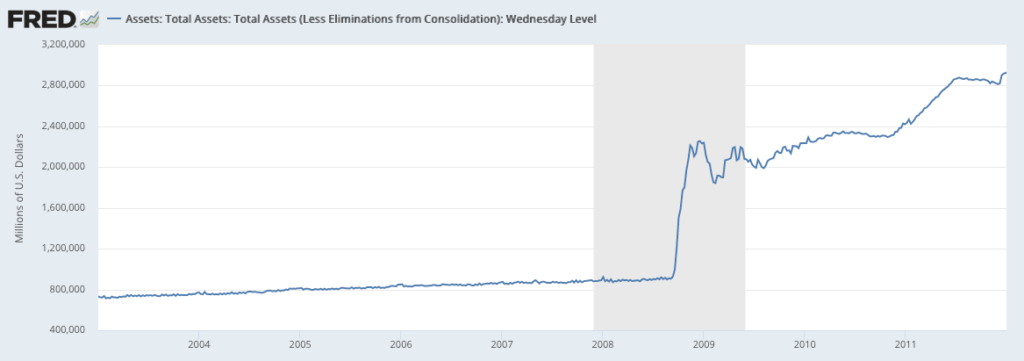
With all that money flowing, both industrial demand and price inflation started picking up. Silver assumed its usual, post-crisis form; it acted as both an industrial and monetary metal. Two and a half years later, in April 2011, it skyrocketed to nearly $50 per ounce.
And remember what happened in 2020…
In March, as COVID was ravaging economies, the gold-silver ratio went crazy, and silver collapsed to $14 per ounce. Again, the Fed followed the formula: It cranked up the printing presses. But this time, the Fed’s balance sheet went from $4.2 trillion to $7.2 trillion… in just four months.

As we write this, the whole world is printing money. If central banks stop the bleeding and economies start to recover, think about the coming industrial demand for silver. And price inflation — right now mainly present in asset prices — may move into consumer goods.
Growing industrial demand alone would substantially boost the price of silver. Likewise, higher price inflation would boost the white metal, too.
But what if BOTH happen in 2021? Silver’s price could potentially go vertical.
In a crisis, silver is universally recognized as valuable.
And in ‘normal’ times, silver remains in demand in our increasingly electronic world.
In this section, we’ll explain why silver is so valuable, and why you might consider buying it.
When mentioned in the financial press, silver is often described as a “green” metal.
Silver is the most conductible of all metals, which makes it useful in electronics. But silver is also increasingly sought after by the “green energy” production sector. It is used in solar panels, electric vehicles, and even in some wind turbines.

When mentioned in the financial press, silver is often described as a “green” metal.
Silver is the most conductible of all metals, which makes it useful in electronics. But silver is also increasingly sought after by the “green energy” production sector. It is used in solar panels, electric vehicles, and even in some wind turbines.
Globally, the amount of silver required to produce all electric vehicles, for example, is expected to increase from 50 million ounces in 2020, to nearly 70 million ounces by 2030, according to a report from the Silver Institute.
And government budgets dumping money into green energy is further increasing this demand.
For example, the European Union plans to spend €547 billion (about $670 billion) on green energy from 2021 to 2027. China is another major driver of demand for silver in green energy.
Silver is also antibacterial, so it has applications for water purification.
Also, there are presently no man-made alternatives to silver. So the industrial buyers must purchase silver. Sure, if the price goes to triple-digits, we may find a suitable substitution. But until that point, silver it is.
That’s why we’re so bullish on the price of silver.
And further strengthening silver’s case is its use as monetary metal — a hedge against inflation…
Silver has been a store of value for thousands of years, and chances are, whatever happens over the next few decades won’t change that.
In fact, during the 1970s and the 2008 financial crisis, as the Federal Reserve turned the money printer on full blast, silver’s value increased.
After the dollar was totally divorced from the gold standard in the 1970s, the US was hit by terrible stagflation – a period of high unemployment, high inflation, higher taxes, higher debt levels, and pitiful economic growth.
As the dollar’s value declined by half, the value of precious metals skyrocketed.
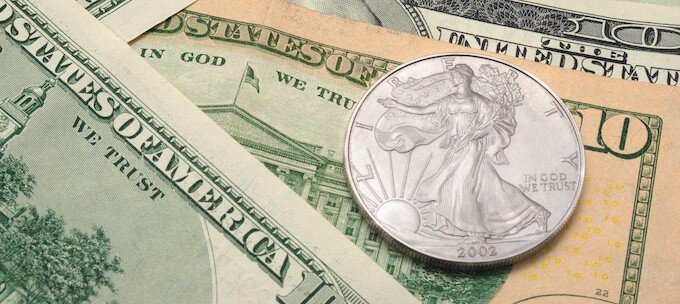
Gold opened the decade at a price of $36.56, and by late 1979, the gold price had risen tenfold, to more than $400.
But silver did even better. It increased from a value of less than $2 in 1970 to more than $30 at the end of 1979 – a gain of more than 15x over the decade.
Decades later, after the 2008 financial crisis, the Federal Reserve went on a $3 trillion money printing binge.
And by 2011, gold had increased from $716 to $1873.70 per ounce — a return of over 2.6x.
But once again, silver outperformed gold, rising 5.2x from $9.29 to $48.58 per ounce.
Did 2020 set up the silver price per ounce for a spike?
You’ve heard of “fake news.”
Now try “fake money.”
Throughout 2020, the amount of money created out of thin air eclipsed anything we have ever seen before.
From March through May of 2020, the Federal Reserve expanded its balance sheet by $3 TRILLION dollars, from just over $4 trillion in assets, to over $7 trillion.
That would be like you logging into your bank account and adding lots of zeros (in this case, 12!) to your balance.
Where did the Fed get this fat new balance sheet?
It conjured that money out of thin air, and injected it into the economy by purchasing assets (Treasurys, corporate debt, mortgage-backed securities, etc.).
The thing is, the Fed can print money, but it can’t magically create value.
So where does the actual wealth to buy those assets come from? It is siphoned off of every other dollar in existence — including the ones in your bank account.
Further adding to the problem of money-flooding the economy with nothing to back it up, is that even in the best of times, the federal government routinely posts $1 trillion yearly deficits.
But in 2020 the US government borrowed $3 trillion (that is in addition to what the Fed printed).
So there is a lot more money floating around — some estimates suggest almost 22% of all money in circulation was created in 2020.
Meanwhile, productivity has actually declined. That sounds like a recipe to accelerate inflation — more dollars available to buy fewer goods and services.
And there are plenty of indicators that inflation has already begun.
For instance, from April 2020 through December 2020, iron ore futures increased by 67% from $90 to over $150.
During the same time frame, nickel futures rocketed from $11,000 to over $16,300 (+48%) and copper futures increased from $2.20 to $3.48 (+58%).
These metals are important components in many consumer products and building materials. An increase in the price of raw materials will eventually lead to an increase in prices for electronics, cars, and construction.
The dollar has also fallen significantly in value when compared to other currencies, losing 10.5% of its relative value from March through November 2020.
All of this suggests that we are in store for possibly significant price inflation. And the aftermath of similar events in the 1970s and after the 2008 financial crisis suggest that silver is one effective way to preserve wealth in such tumultuous times.
Silver coins kept in a home safe could provide emergency funds in the event of a number of scenarios.
We have already talked about the benefit of silver to protect against inflation: With normal inflation, you could convert your precious metals back into fiat currency when you need to spend it.
But in the worst case scenario of hyperinflation, and without an alternative currency to convert your silver into, physical silver offers you an age-old medium of exchange.
While people might not think to look at silver as money during normal times, it is still universally recognized as valuable. And physical silver does not require electronic devices or internet access to spend, as Bitcoin and other cryptocurrencies do.
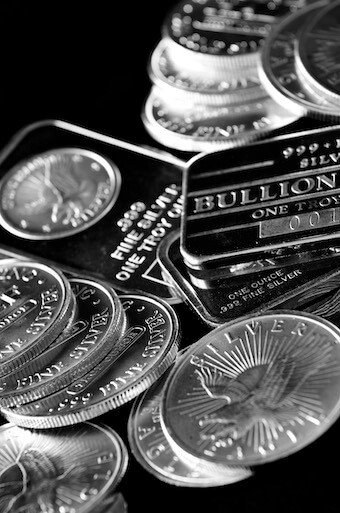
This is why it is a smart move to keep some silver easily accessible in a home safe.
But not just in the event of hyperinflation.
A natural disaster, like Hurricane Maria in Puerto Rico, or Hurricane Katrina in New Orleans, can take out the power grid for weeks, or even months. For long periods where you cannot access cash or bank funds, silver at least gives you a form of hard money to spend for essentials.
The risk of putting all your nest eggs in one basket…
Ok, so we know that governments can’t do math, otherwise they wouldn’t spend so much.
But did you know that your own bank might not be able to do math, either?
They might not have enough money in reserves to cover deposits. In fact, they’re almost certain not to, thanks to what’s called “fractional reserve,” a near-universal banking practice that only keeps a fraction of deposits on reserve.
If you’re hearing alarm bells, you’re right.
As we saw in Cyprus in 2013, a banking collapse could cut off your access to funds, and even empty your account.
In Cyprus, the banks did not have enough money in reserves to cover deposits. So to keep themselves from collapsing, they stole substantial deposits from accounts worth more than €100,000 and gave out stock certificates instead, which then plummeted in value.
They called it a bail-in. And even smaller depositors may have found themselves in a bind during the banking holiday when they could only withdraw €100 per day from ATMs.
The unfortunate reality is that many banks in the United States, Europe and the rest of the world are in a precarious condition.
In 2008, the world learnt the hard way that even Western banks aren’t as safe as they want us to believe.
Suddenly, OVERNIGHT, some of the largest banks in the world collapsed: Wachovia. Lehman Brothers. Washington Mutual. Dozens of banks vanished — in an instant.
And more banks continued to fold. From 2008 to 2012 the Federal Deposit Insurance Corporation (FDIC) had to bail out 465 different banks in the United States.
During good times, that’s not a big problem, because depositors are protected by the Federal Deposit Insurance Corporation (FDIC) for up to $250,000 in deposits.
But the FDIC itself is absurdly underfunded. The FDIC has only $110 billion in reserves.
That sounds like a lot — until you realize that the entire US banking system is worth $13 TRILLION.
That $110 billion covers less than 1% of the US banking system.
During normal times (when the economy is performing, unemployment is low and steady, banks are not collapsing, etc.), the FDIC’s woefully low capital reserves are still generally sufficient.
Needless to say, these are not normal times.
In fact, in early December 2020, the discovery of a massive online security breach was announced: Foreign hackers had gained access to a number of government and Fortune 500 databases and systems, through an exploitation built into SolarWinds’ cybersecurity software.
The hackers had access for six to nine months before being discovered. And these systems deal with everything from corporate finances to the energy grid, all the way up to nuclear research.
So cold hard money, in the form of physical silver, is an enormous insurance policy AGAINST national disasters, hostile governments, systemic rot, and inflationary monetary policies.
Keeping silver at home, in a good safe, is one way to make sure you still have access to some form of money, no matter what happens next.
If you’re looking for a hedge against inflation and volatility in 2021, buying silver could be an option worth exploring.
For 5,000 years, people have turned to silver (and gold) to protect against currency devaluation. That’s why in 2021, in an uncertain world, it makes sense to consider buying silver in case the dollar depreciates.
Here’s just one example of how silver (which is cheaper than gold) can help protect your assets:
In 1971, the United States ended the gold standard, allowing the Federal Reserve to print money at will. No longer was the dollar linked to gold at a fixed value. Now the printing presses could go full-force.
Guess what happened? (Hint: the silver price per ounce eventually rocketed up.)
From 1971 to 1981, the purchasing power of the US dollar declined by half, while the silver spot price (which tends to track the direction of gold prices) increased by a factor of five.
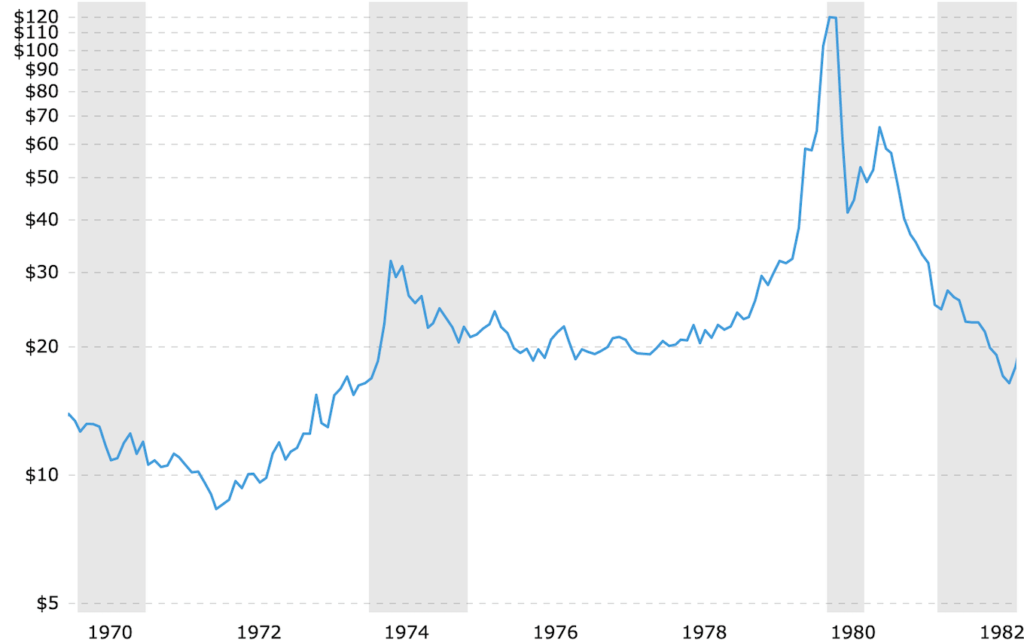
That meant that every dollar you put into the bank was worth 50 cents ten years later, while every dollar you converted into silver grew to a value of $5 or more.
And it was the same story after the 2008 financial crisis, which we will dive into in more detail below in the section on silver as an insurance policy against inflation.
But first, it’s important to understand why precious metal prices generally stand the test of time.
There is a huge potential for silver to gain value throughout 2021 and beyond, mainly due to inflationary monetary policy (i.e. massive money printing), and to a lesser extent, because of demand for silver in industrial uses (especially green energy).
Silver is best used as an insurance policy against unstable currencies, banking instability, and reckless government actions. Over 5,000 years of history suggests that silver will continue to hold value, whatever happens in the world — and such is not the case for dollars, euros, yen and other paper currencies.
Buying physical silver, and storing it at home in a safe is the most direct way to own silver, and it also gives you access to a form of money in emergency scenarios like natural disasters, economic hardship, and hyperinflation.
There are other ways to gain exposure to silver as an investment, such as options and futures contracts, which only experienced investors should consider, as there is considerable risk involved.
It is easy to acquire silver, because of the low costs per coin, and it is a great way to preserve value.
So if you are concerned about the irresponsible actions of governments and central banks, it makes a lot of sense to add silver to your holdings today.
Want in-depth guidance on silver (and gold)?
If you want to learn more about silver, as well as gold, download our free Ultimate Gold and Silver guide. We:

Legal Disclaimer:
Neither this document, nor any content presented by our organization, is intended to provide personal tax or financial advice. This information is intended to be used and must be used for information purposes only.
We are not investment or tax advisors, and this should not be considered advice. It is very important to do your own analysis before making any investment or employing any tax strategy. You should consider your own personal circumstances and speak with professional advisors before making any investment.
The information contained in this report is based on our own research, opinions, as well as representations made by company management. We believe the information presented in this report to be true and accurate at the time of publication but do not guarantee the accuracy of every statement, nor guarantee that the information will not change in the future.
It is important that you independently research any information that you wish to rely upon, whether for the purpose of making an investment or tax decision, or otherwise.
No content on the website (SovereignMan.com) or related sites, nor any content in this email, report, or related content, constitutes, nor should be understood as constituting, a recommendation to enter into any securities transactions or to engage in any of the investment strategies presented here, nor an offer of securities.
Sovereign Man employees, officers, and directors may participate in any investment described in this content when legally permissible, and do so on the same investment terms as subscribers. Sovereign Man employees, officers, or directors receive NO financial compensation from companies who appear in this report.
Join over 100,000 subscribers who receive our free Notes From the Field newsletter
where you’ll get real boots on the ground intelligence as we travel the world and seek out the best opportunities for our readers.
It’s free, it’s packed with information, and best of all, it’s short… there’s no verbose pontification here– we both have better things to do with our time.
And while I appreciate all the visitors who stop by our website, I provide special bonuses to our email subscribers… including free premium intelligence reports and other valuable content that I only share with them.
It’s definitely worth your while to sign-up, and if you don’t like it, you can unsubscribe at any time.
How did you like this article?
Click one of the stars to add your vote...
Other readers gave this article an average rating of 5 stars.